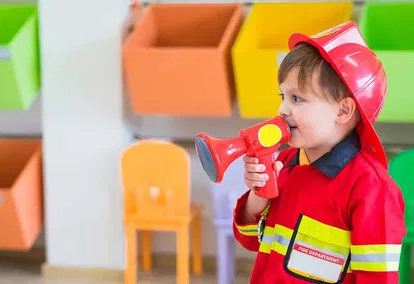
Ben urged his preschool daughter into the Mission Friends room by saying, “You’re just going to play for a while. I’ll be back soon.”
I knew he was simply assuring his daughter she would have a good experience and he would come back. But I cringed inside just a little at his description of our time as “just play.” What I planned for the evening was play — but play with a purpose.
My goal for my preschoolers was to learn about the missionary and the missions area for the month. And yes, we would be playing most of the evening.
Play is how preschoolers learn. Play helps preschoolers gain understanding of their world. Through play, preschoolers
- touch things to know how they feel,
- manipulate things to learn how they work,
- watch things happen to discover cause and effect,
- use pretend play to explore real world situations and relationships,
- move to experience how their bodies relate to the physical world,
- express themselves through art and music to explore their emotions and for the sheer joy of creating something,
- process the information they hear in stories and relate it to their own lives or the lives of others.
Mission Friends leaders use the preschoolers’ need to play to intentionally provide learning opportunities each week. Each play opportunity becomes a springboard for learning about the missionary or missions area. As the leader engages in play with her preschoolers, she has the opportunity to guide the conversation toward the real-life experiences of a missionary.
Leaders can make the environment inviting for play by occasionally adding new things to each center. Ethnic play foods in the homeliving area can spark a discussion about what foods are typical in the missions area. Unusual building materials in the blocks area can entice budding engineers to explore types of housing available where the missionary lives.
Playing games engage preschoolers physically and mentally. A relay race with items that might go in a back-to-school backpack can focus thinking about the needs of others while building gross motor skills. A matching game uses pre-reading skills to also learn about the tools a missionary may use.
Many preschoolers enjoy creating with art supplies. The leader may choose to include items related to the missionary’s location or activities in the art area. If the missionary often travels by car, she may ask preschoolers to use paint to make tracks with toy cars. A collage of adhesive bandages and other first aid items may encourage talk of ways missionaries help others.
Provide tangible items related to the missions area within your space. Strumming a real guitar gives a feel for how a missionary may lead worship. Holding a real fruit from a missions area while praying for the missionary becomes a personal experience.
So, let them play — and learn. They don’t have to know you do it on purpose.
by Vivian Howell